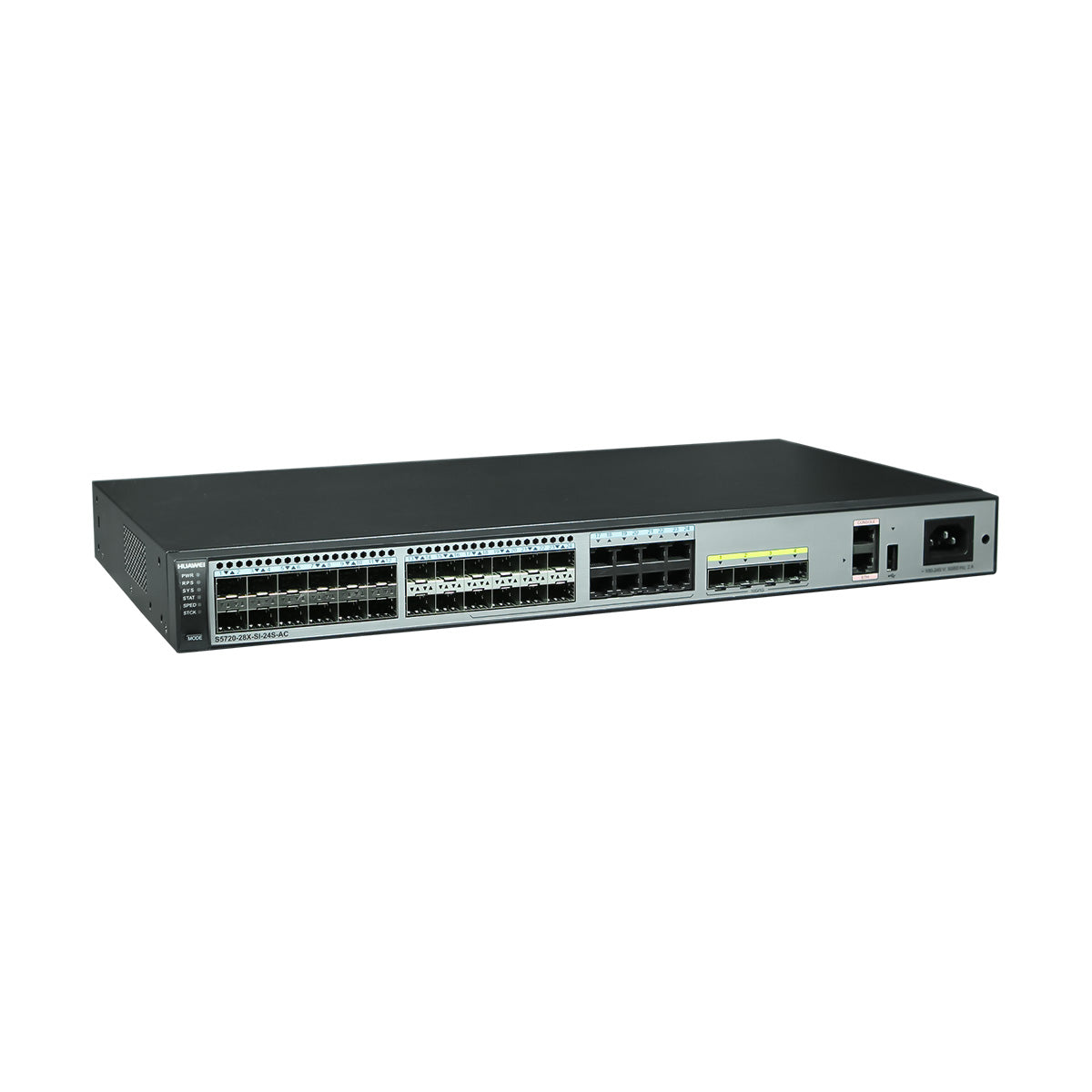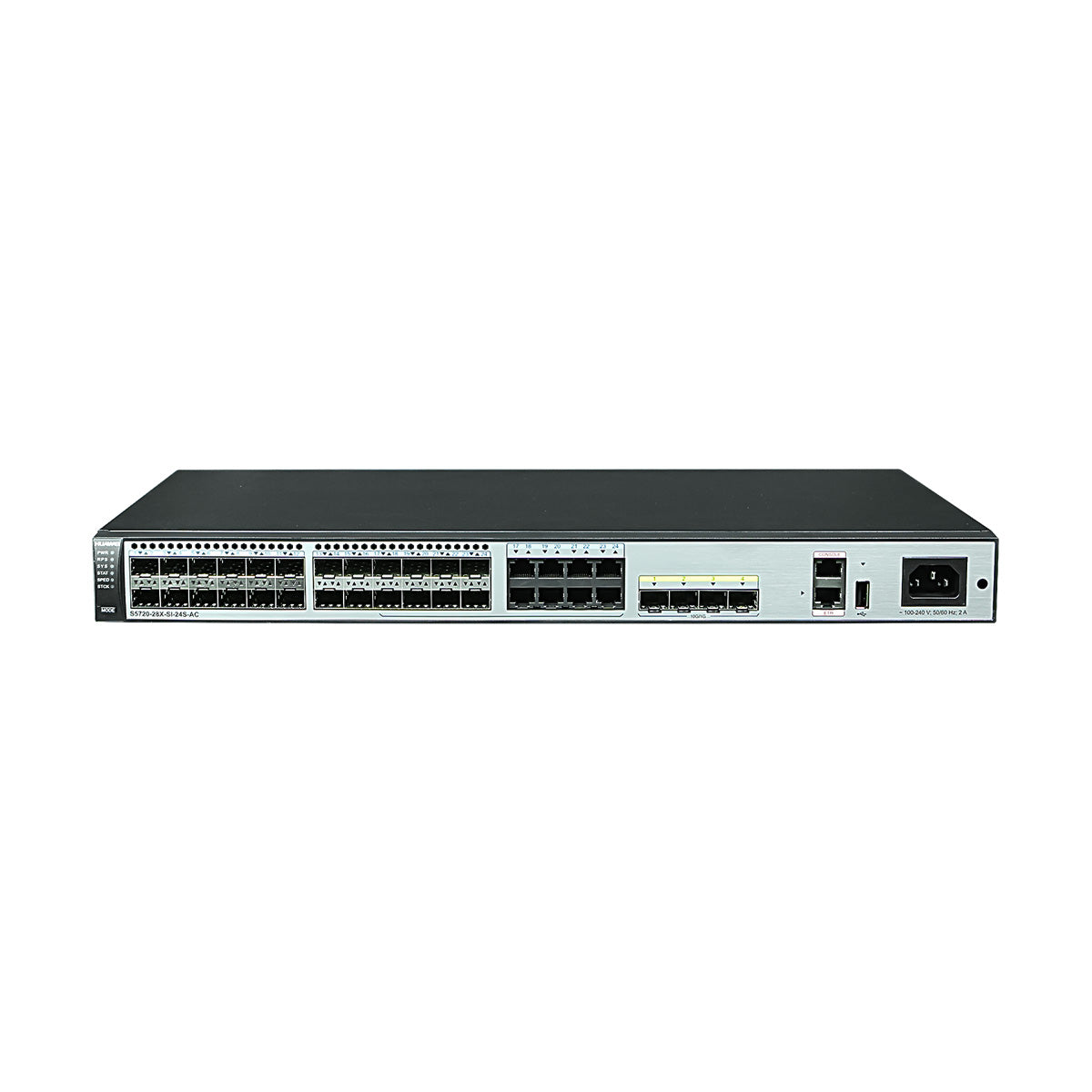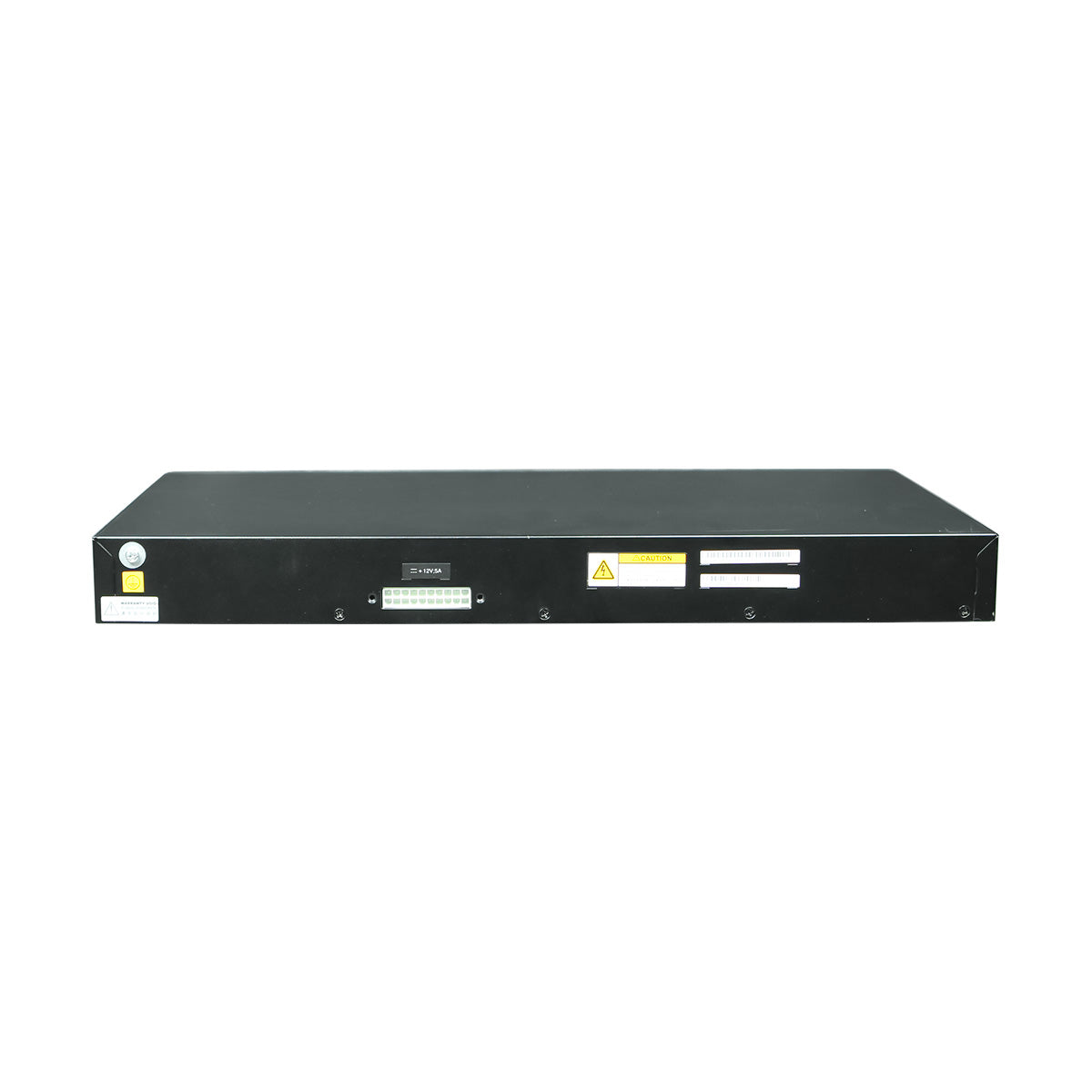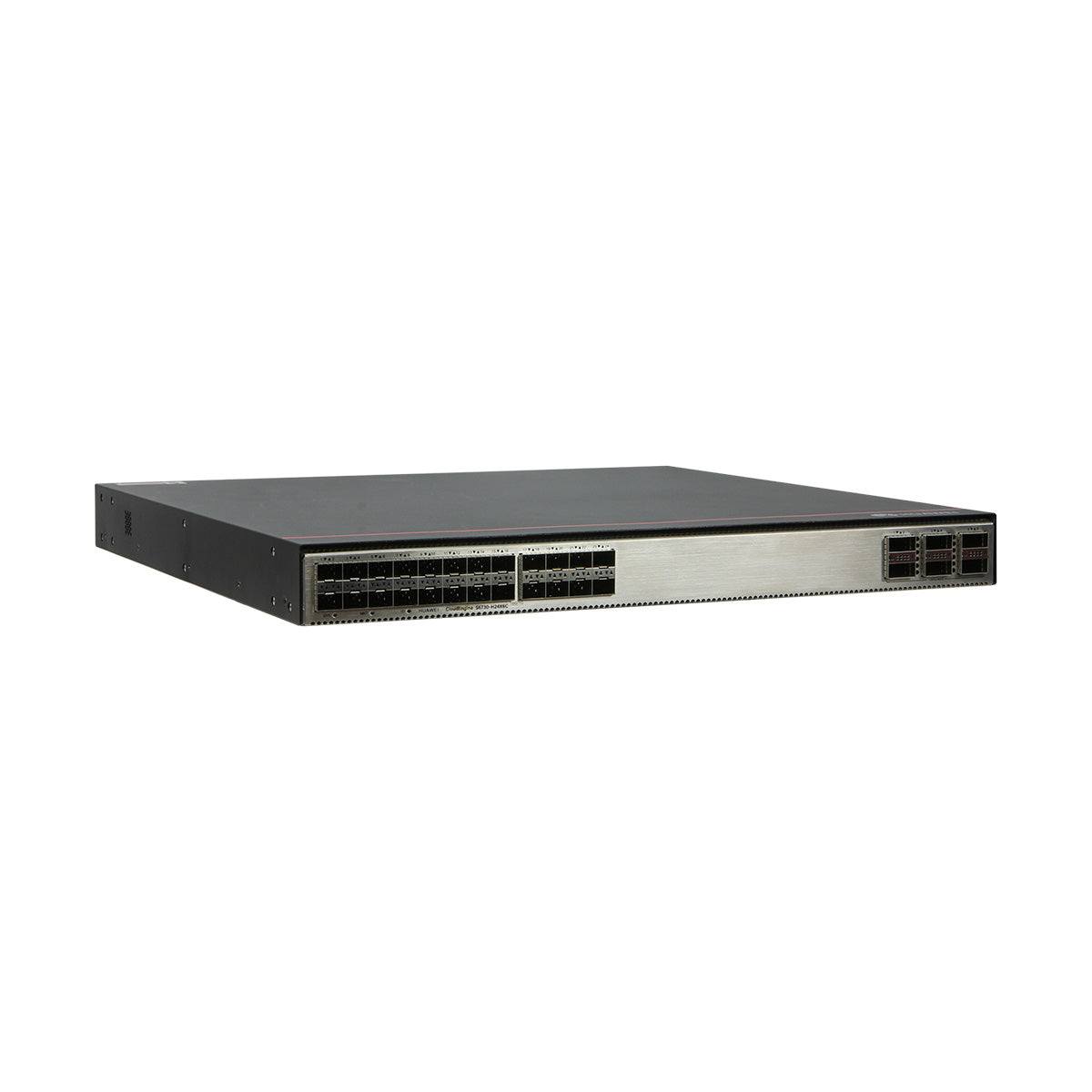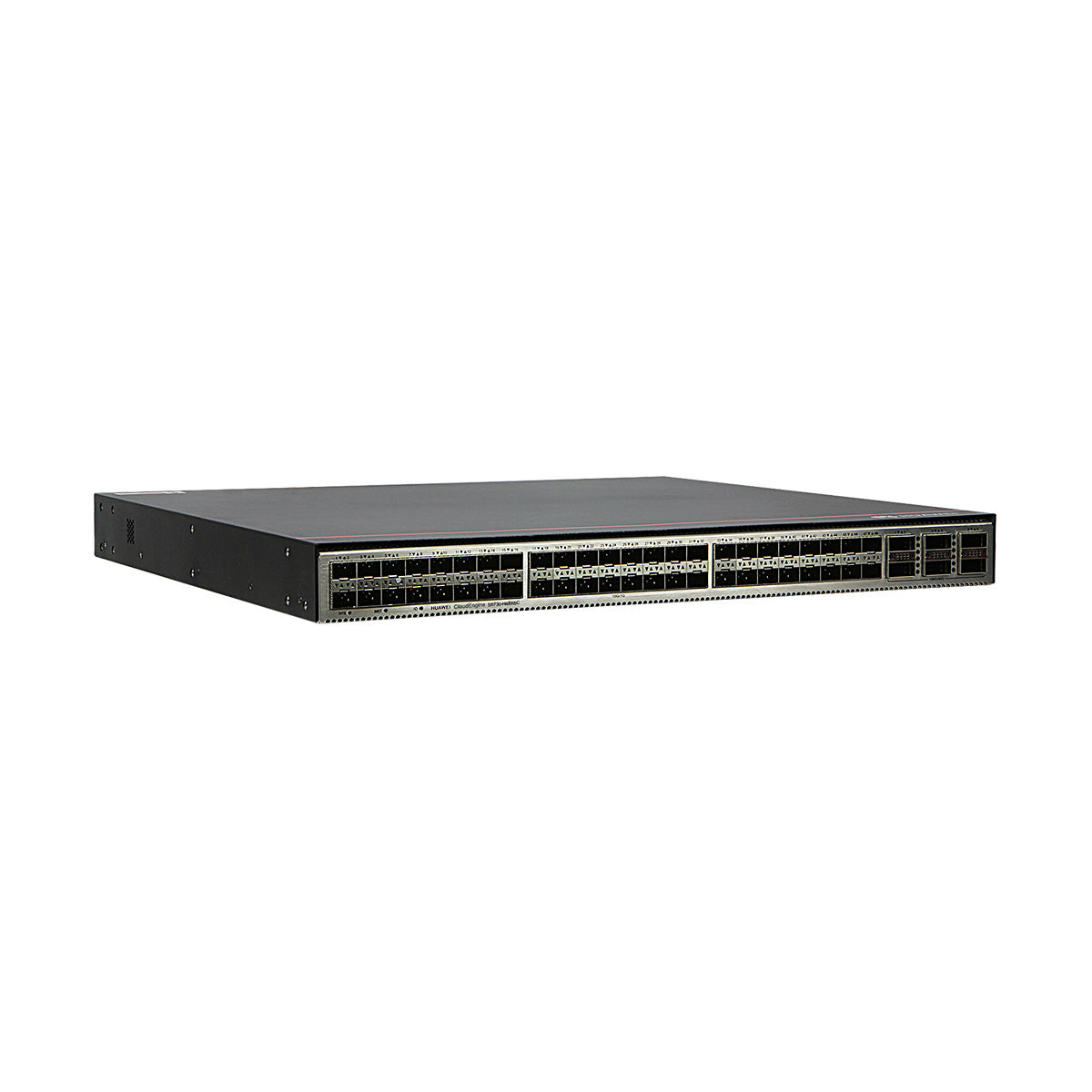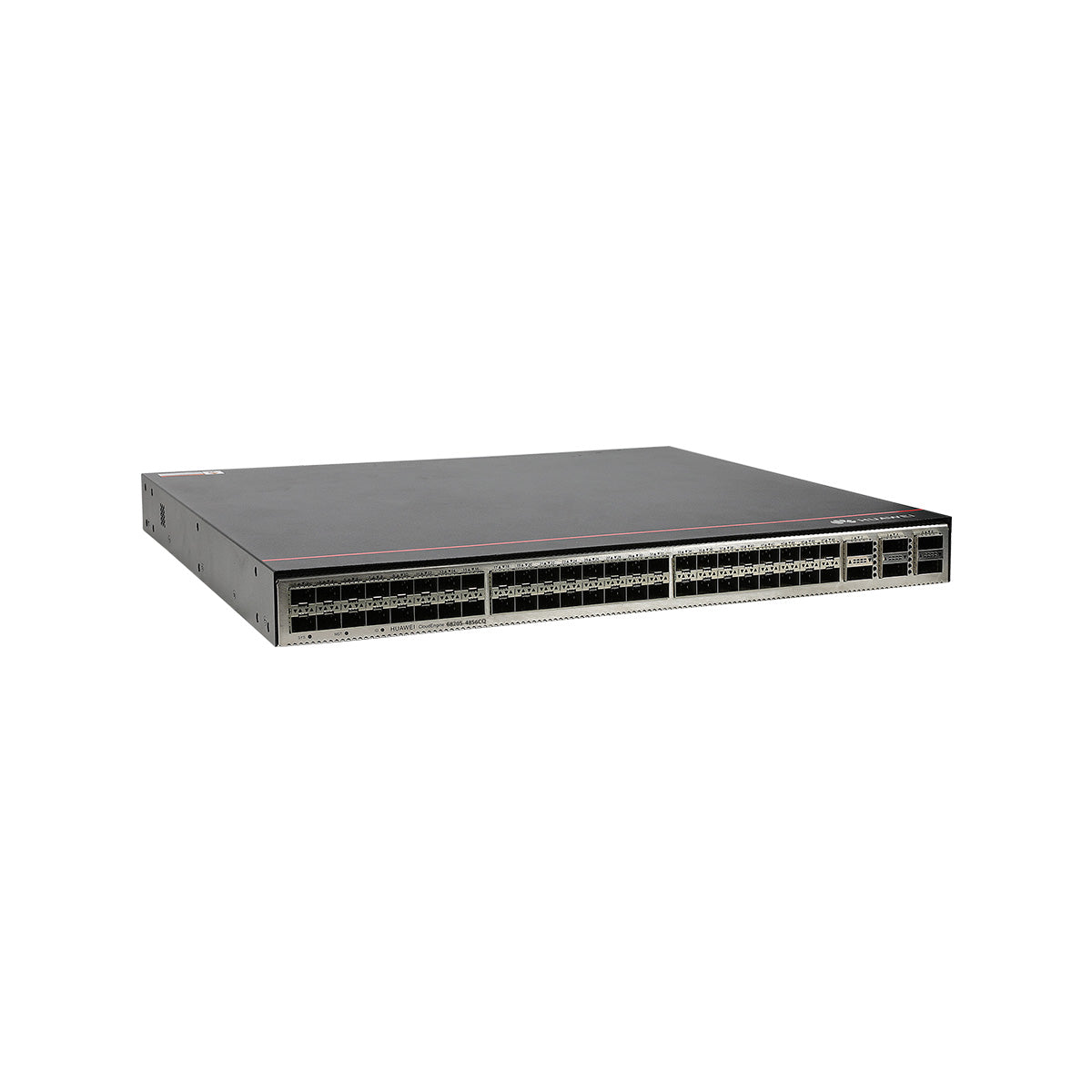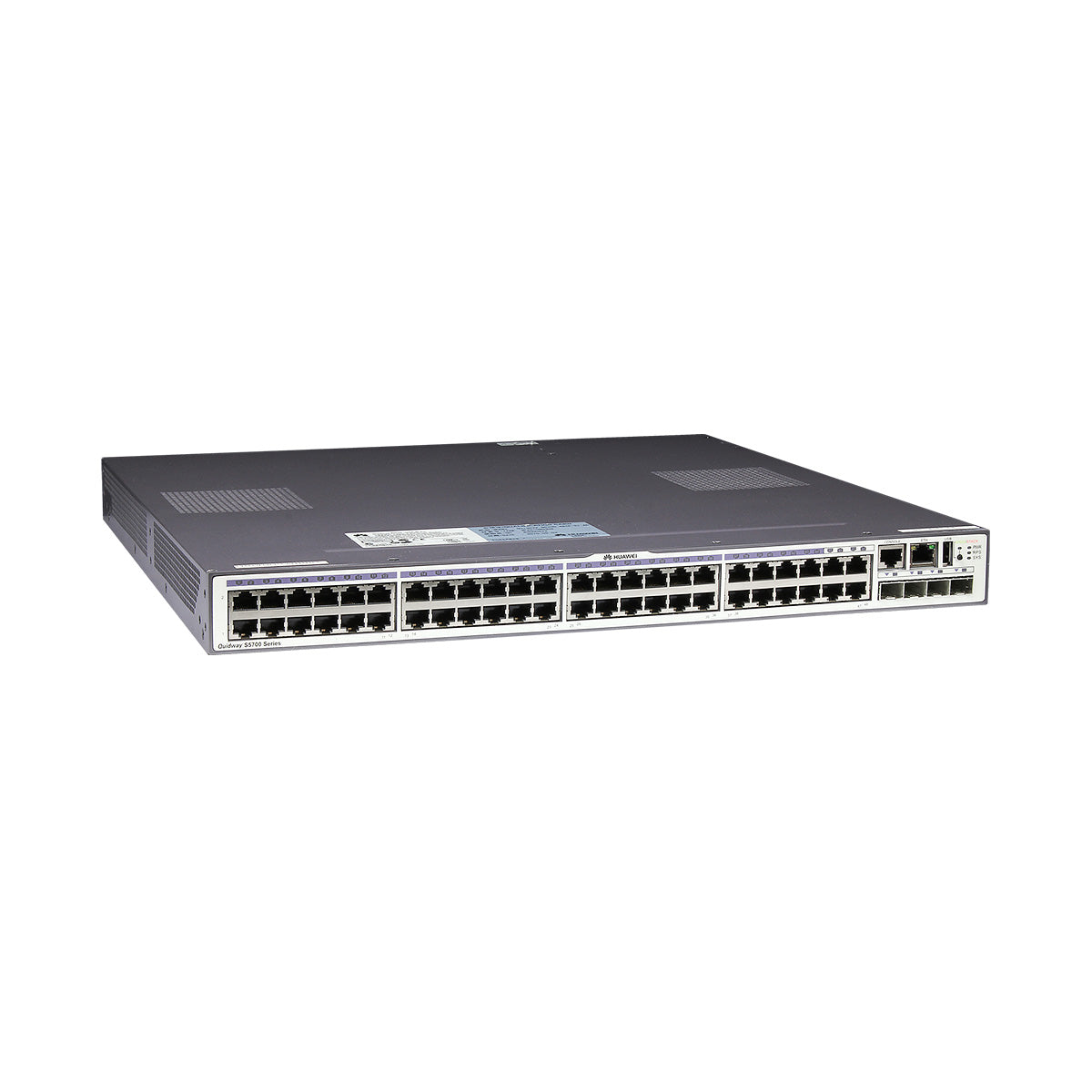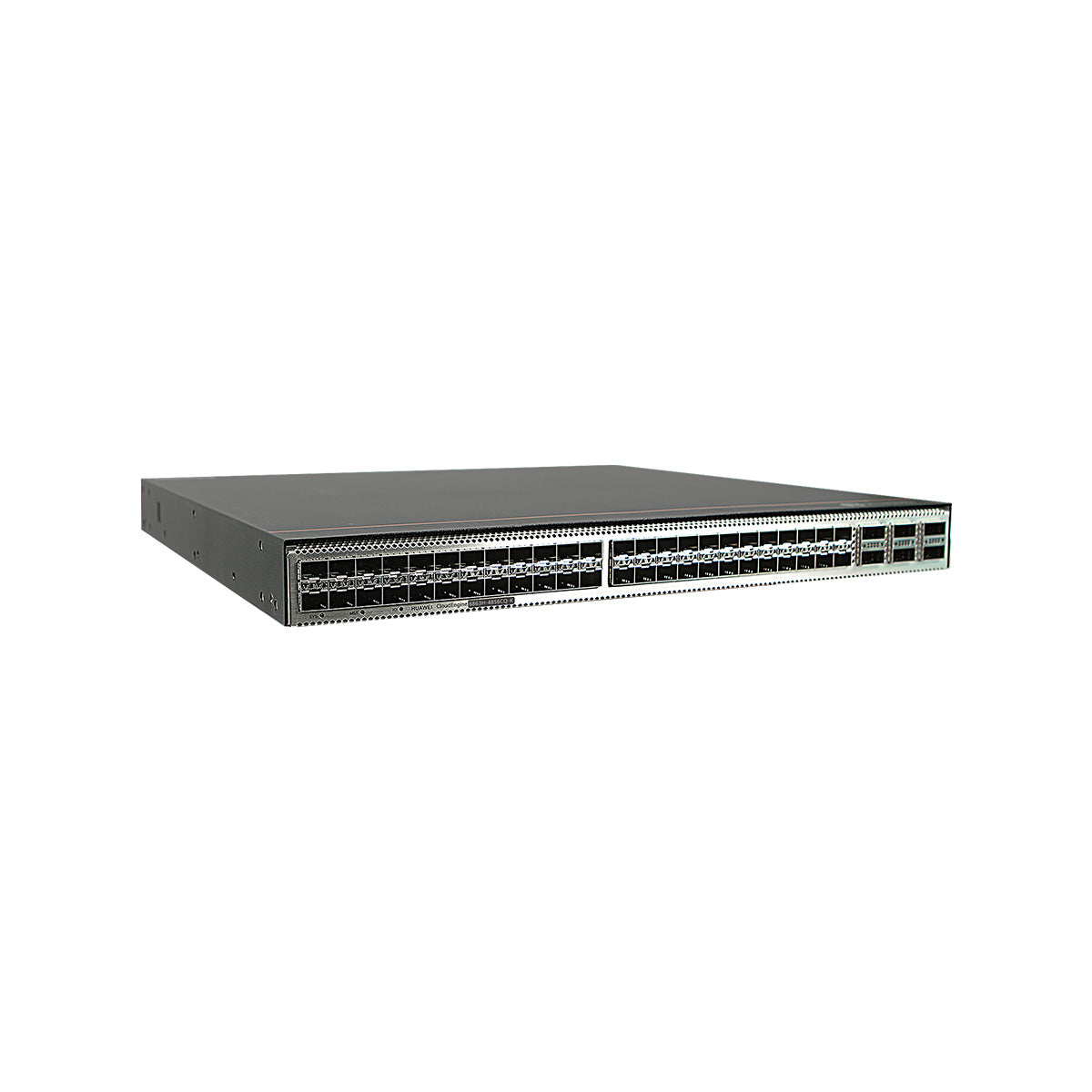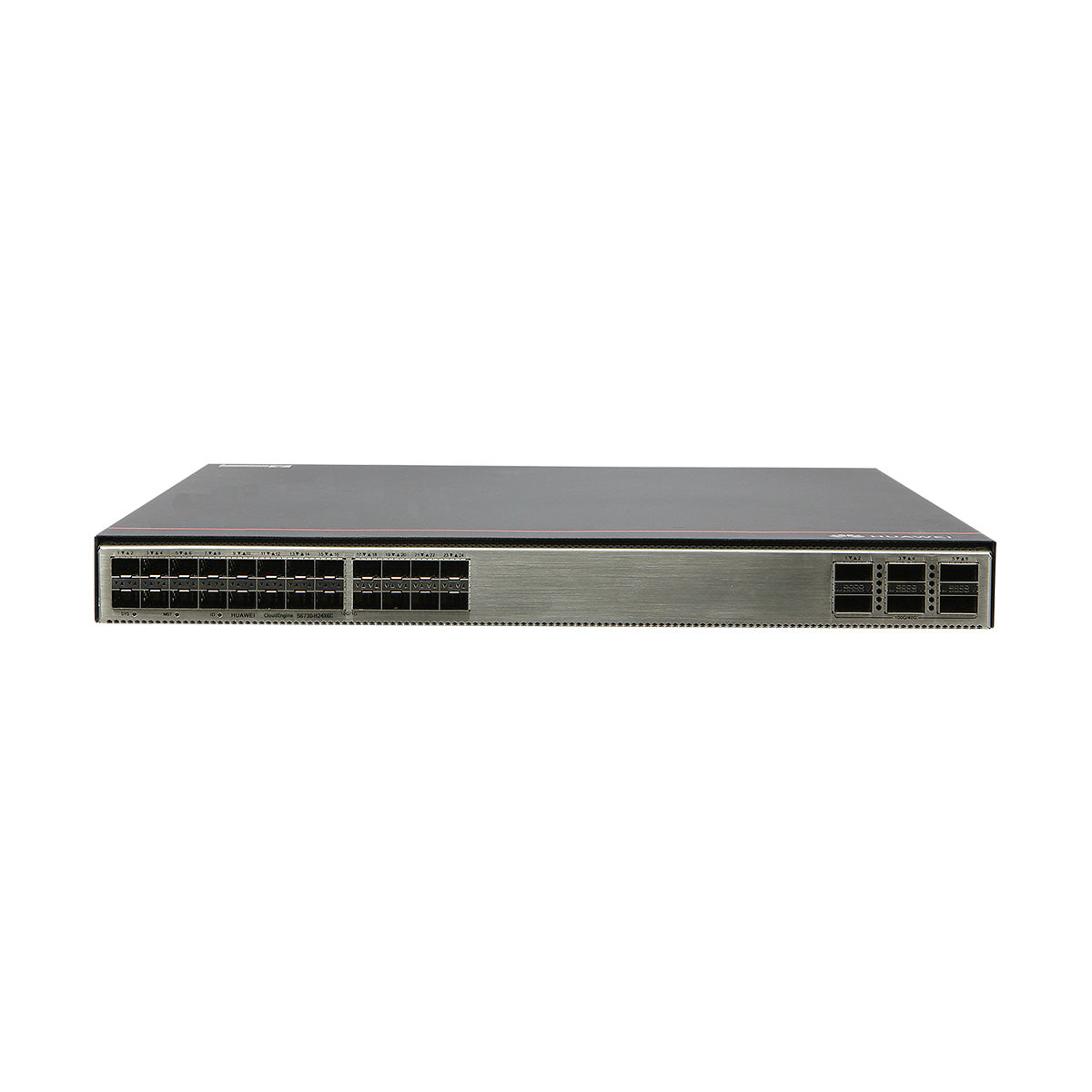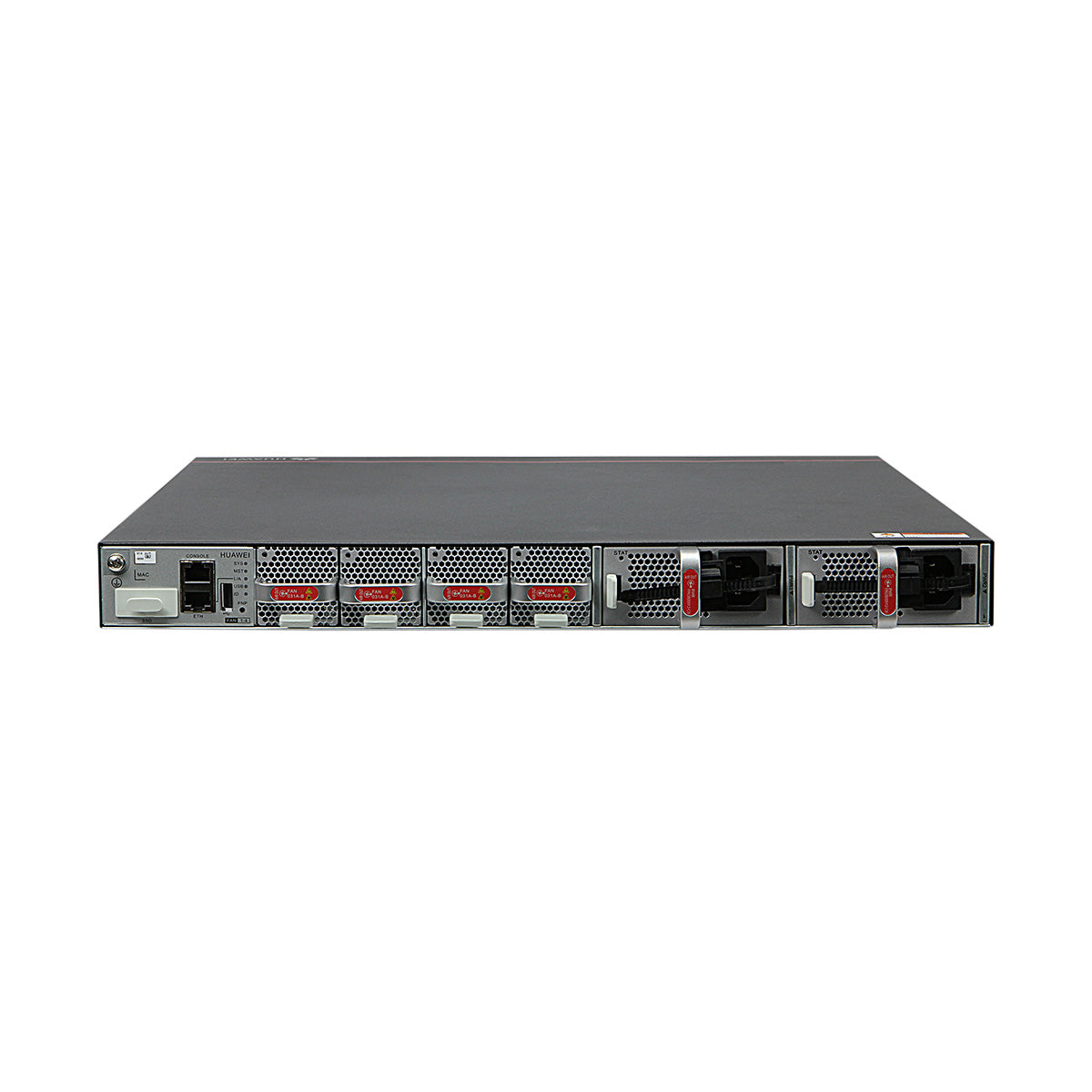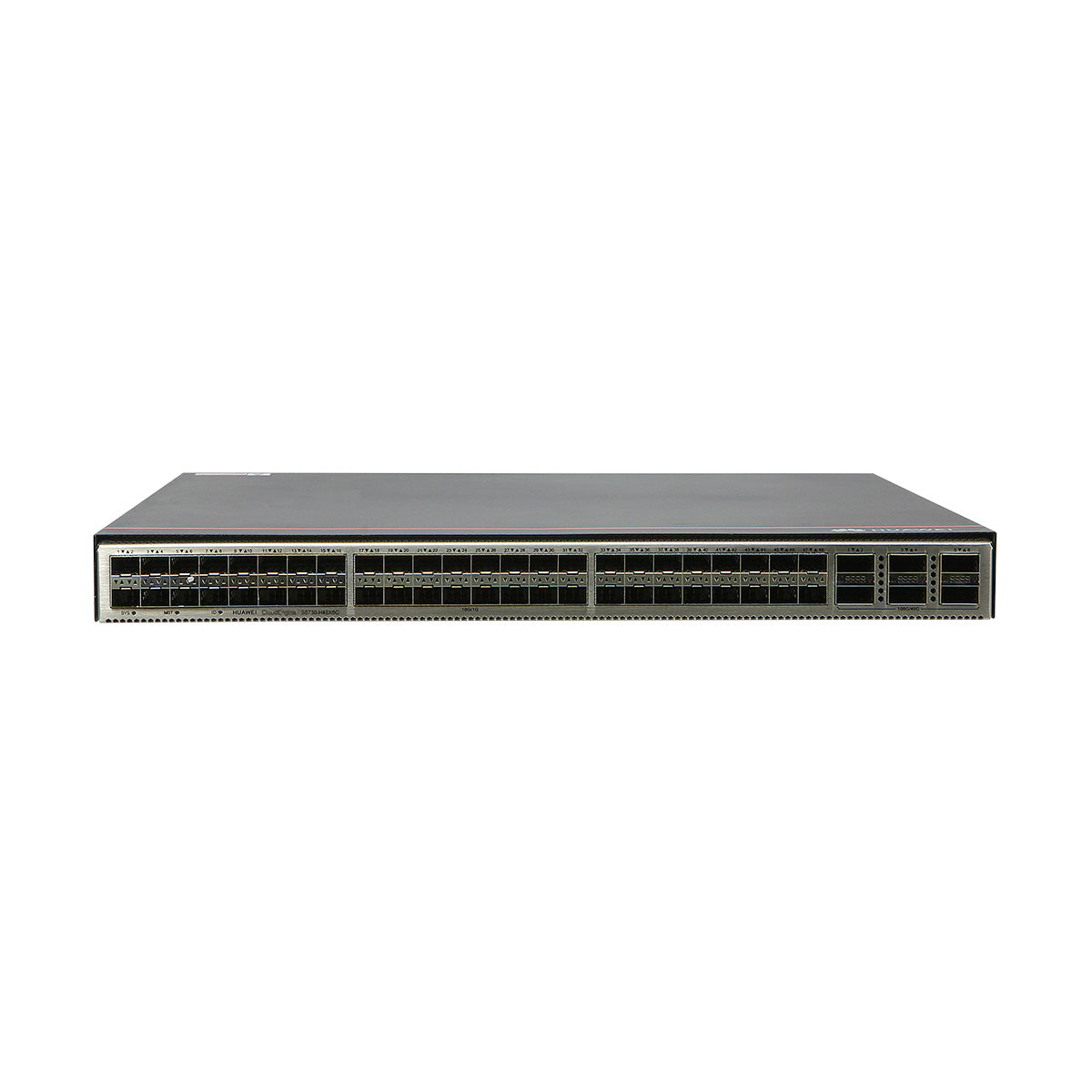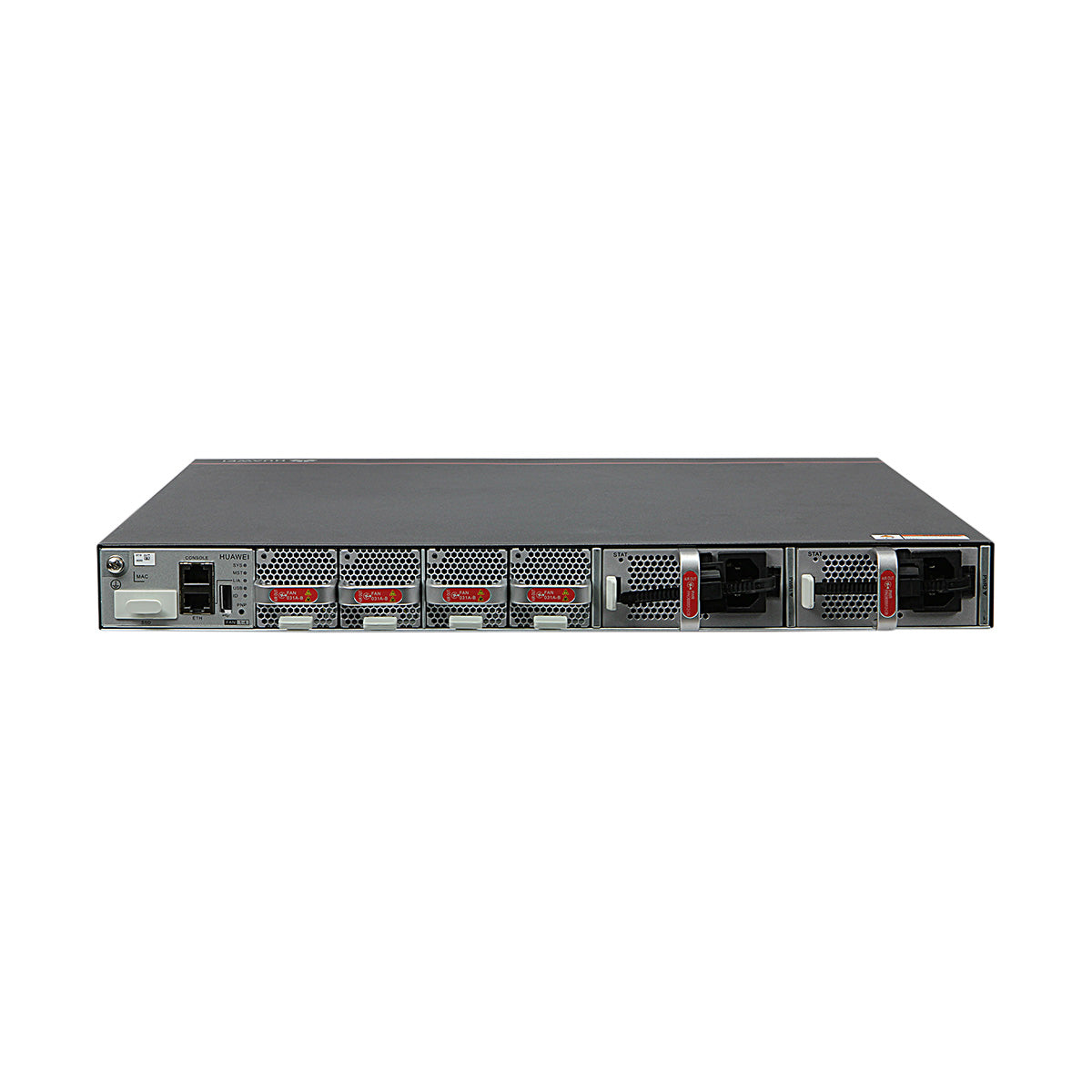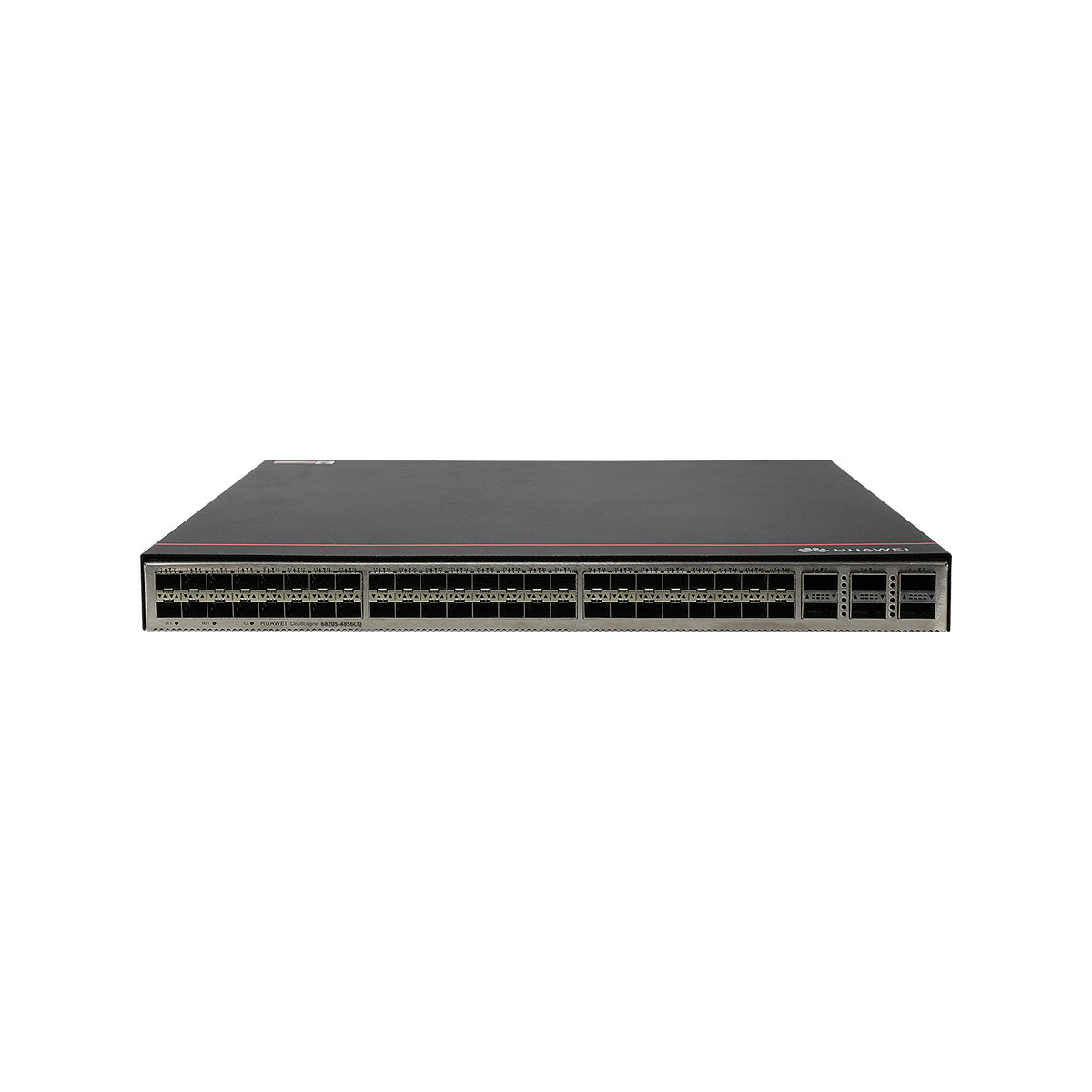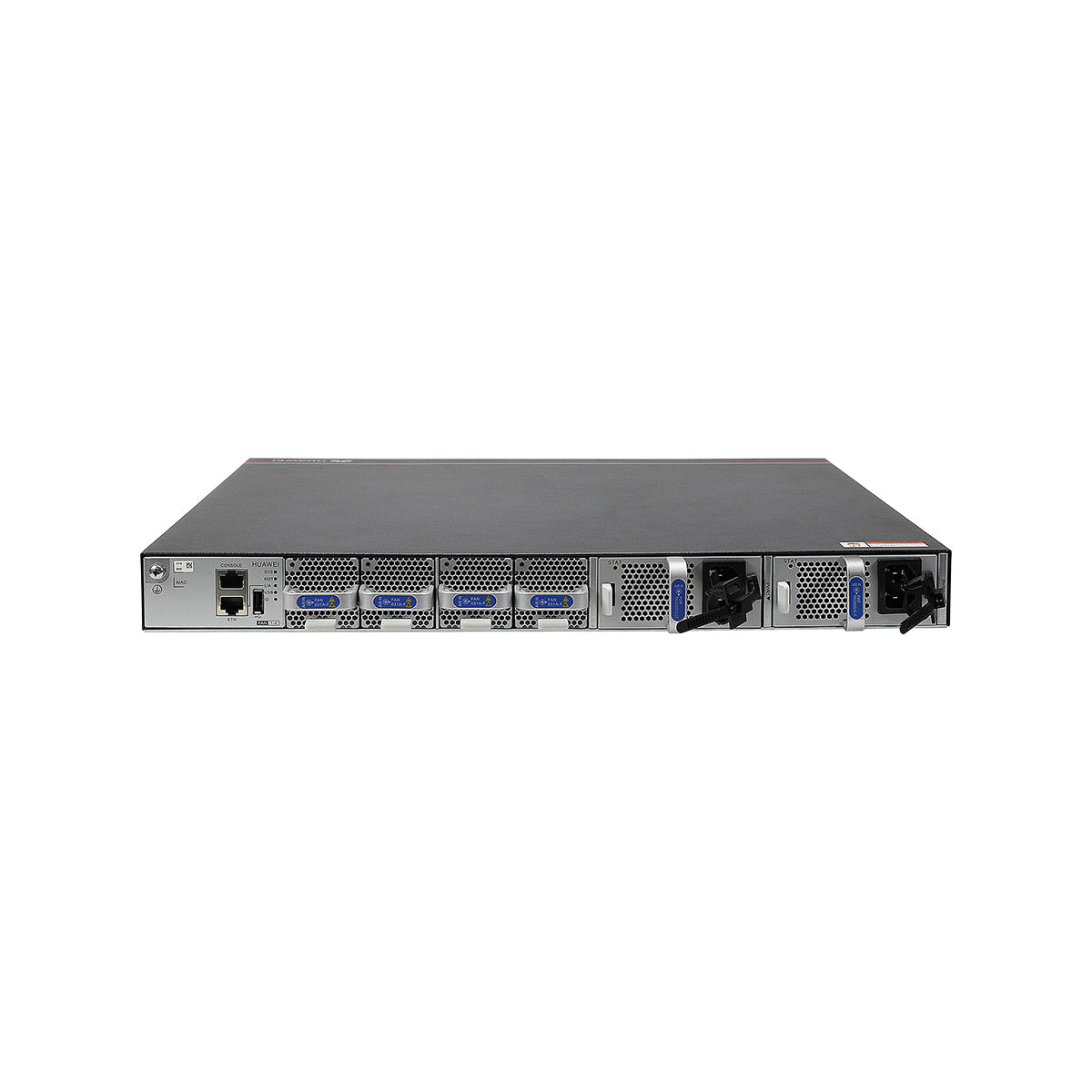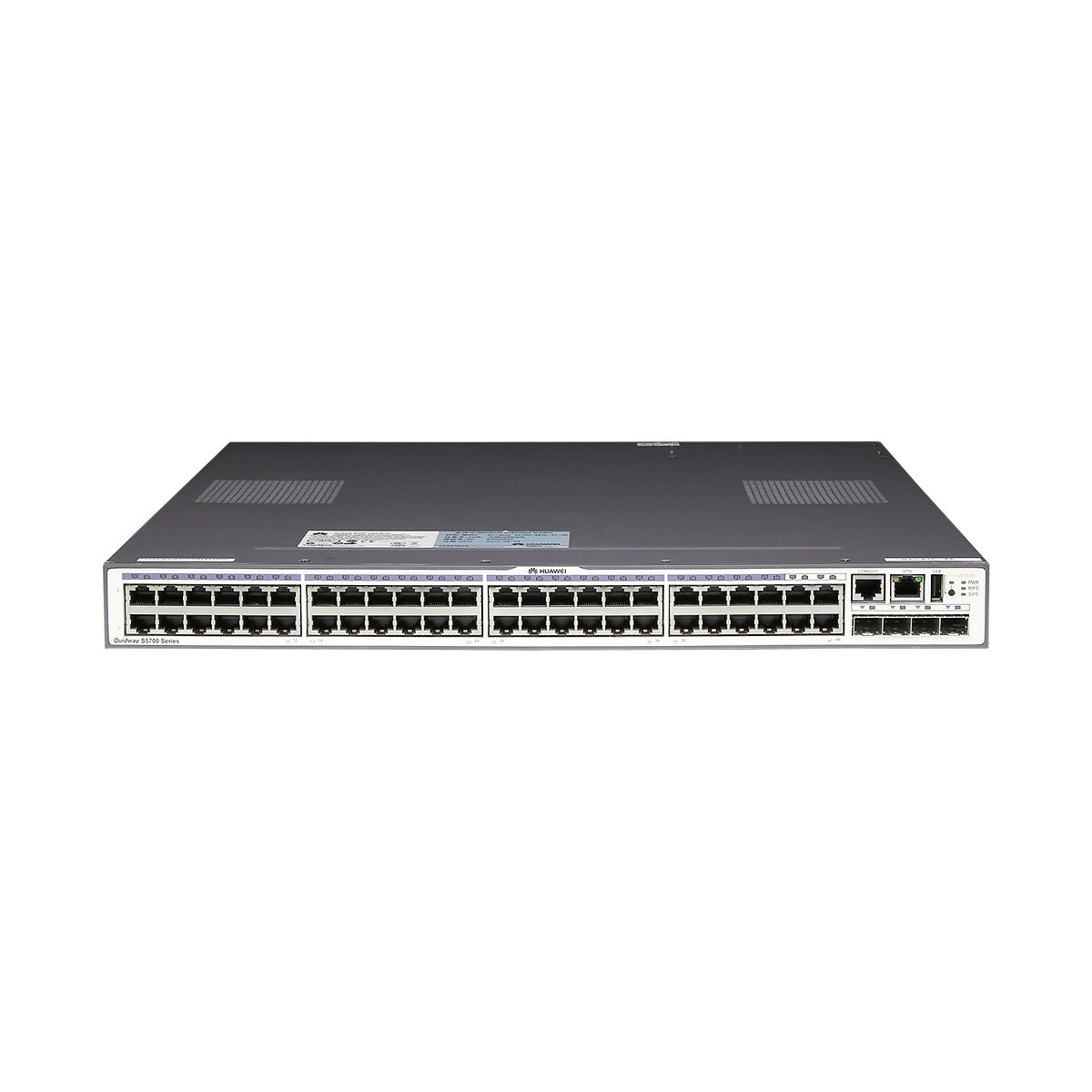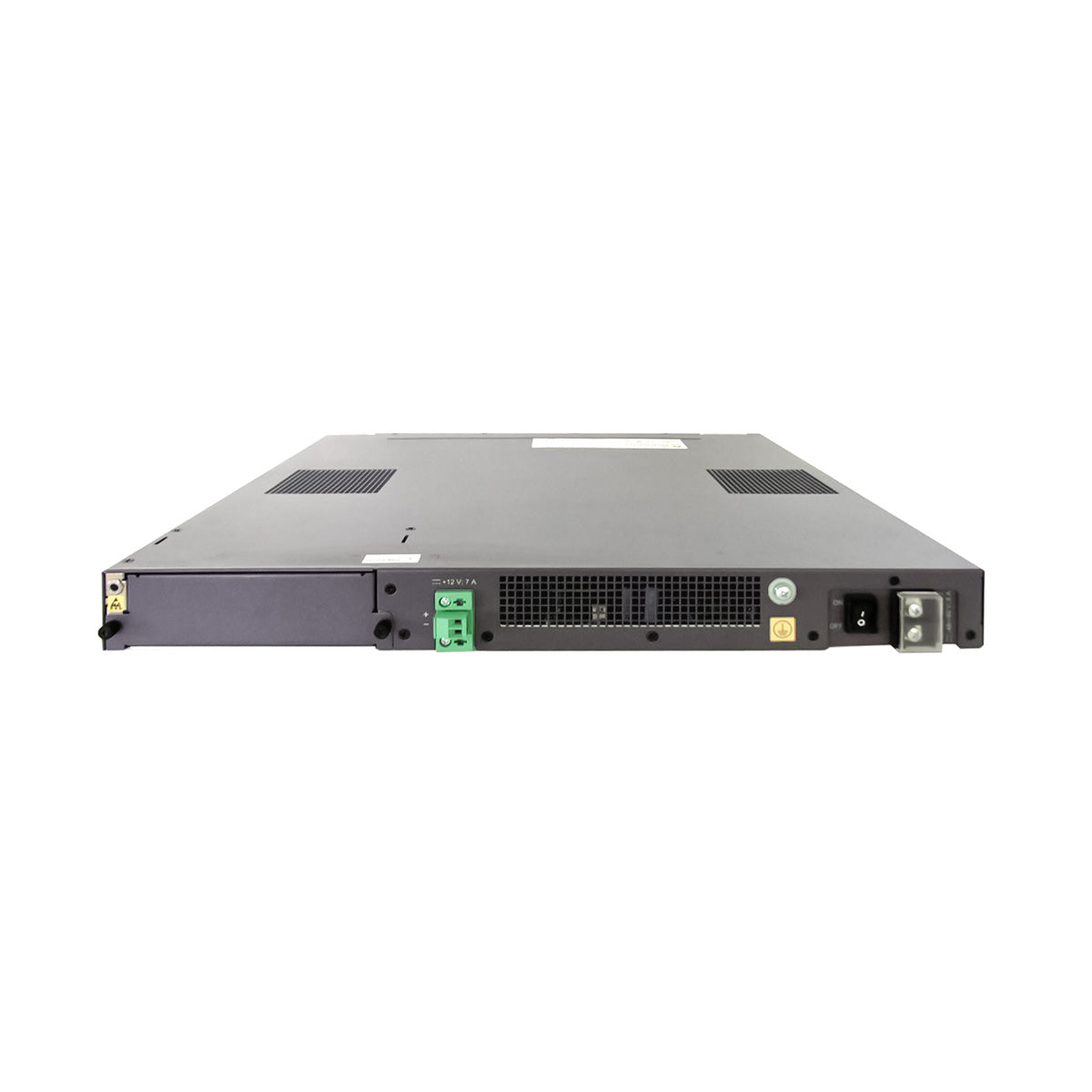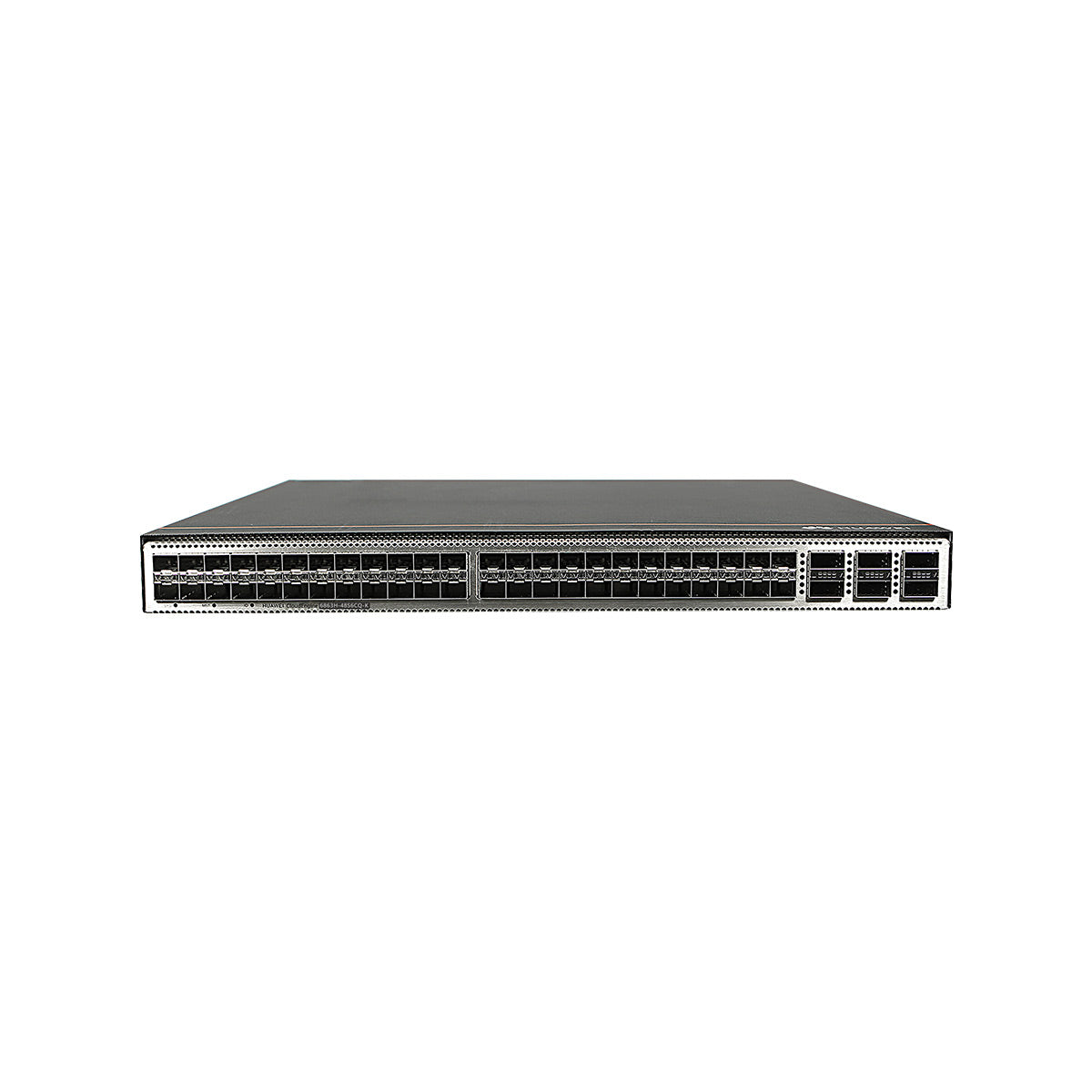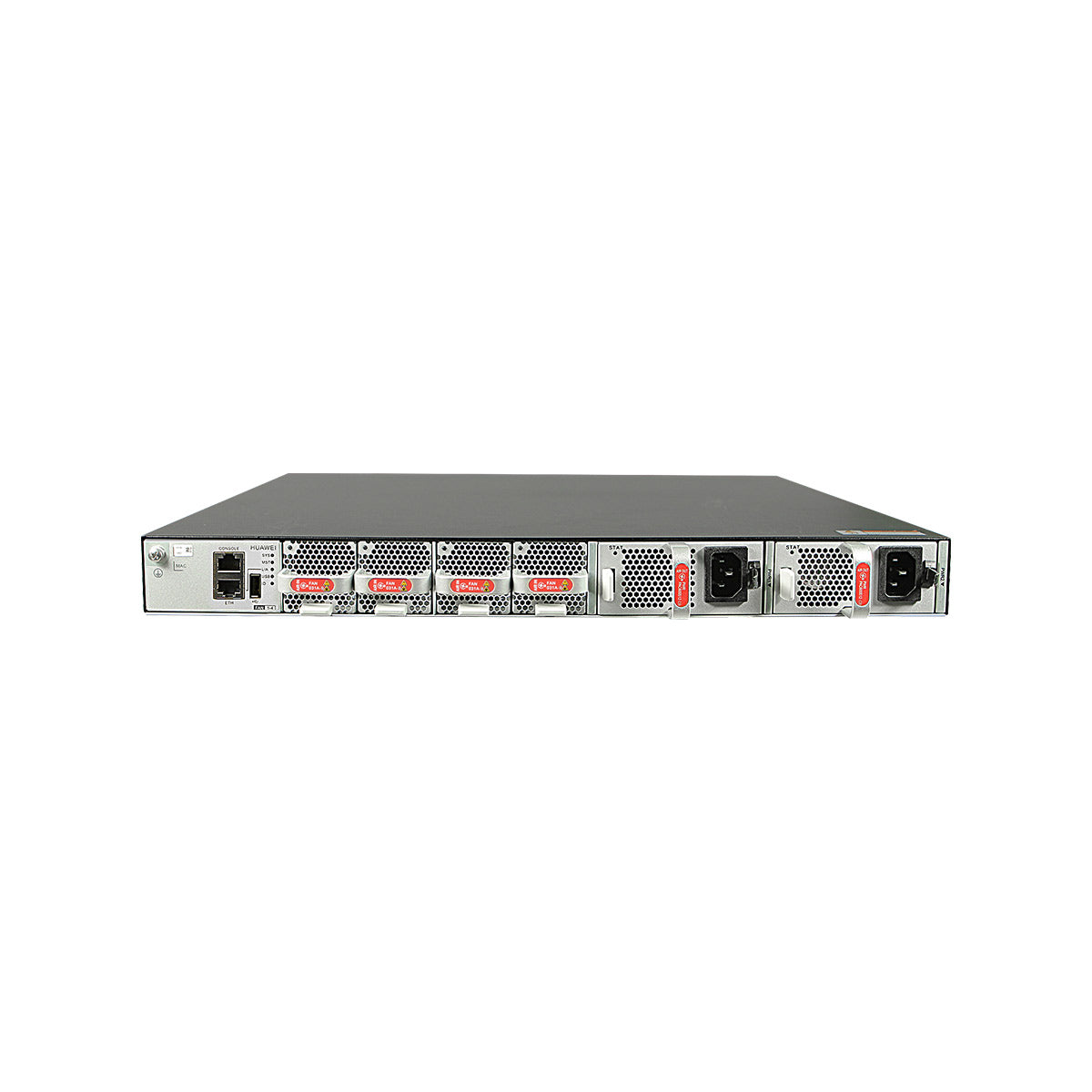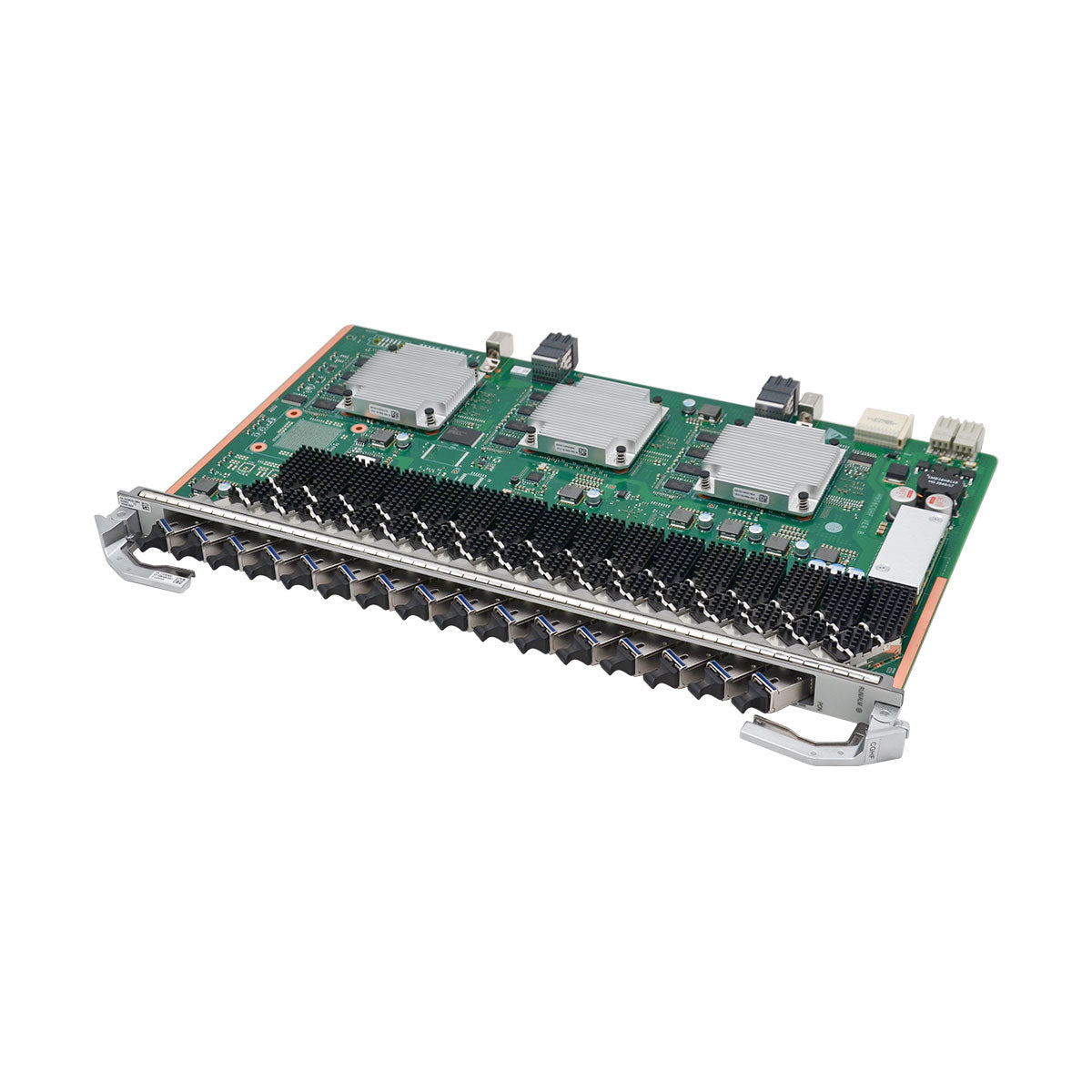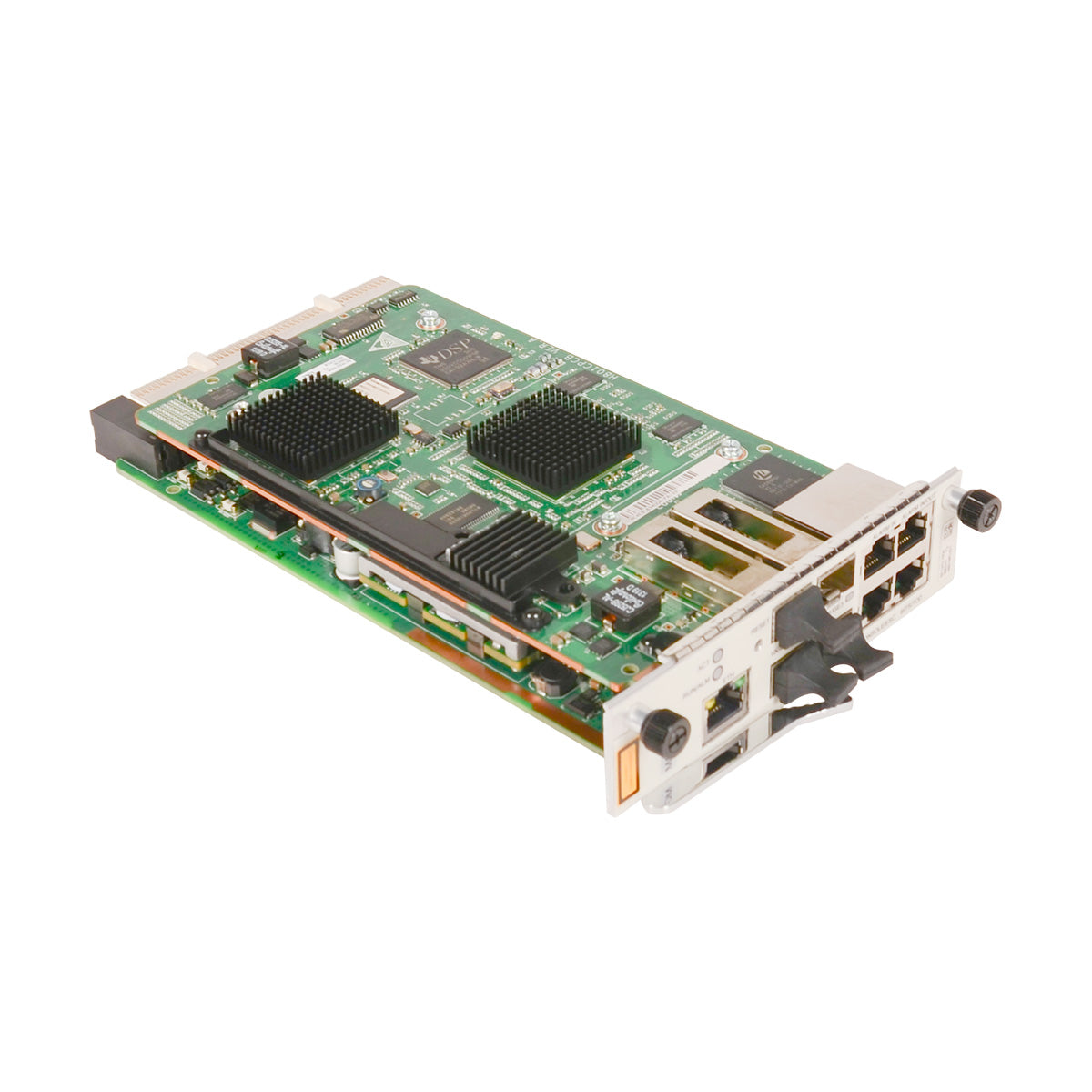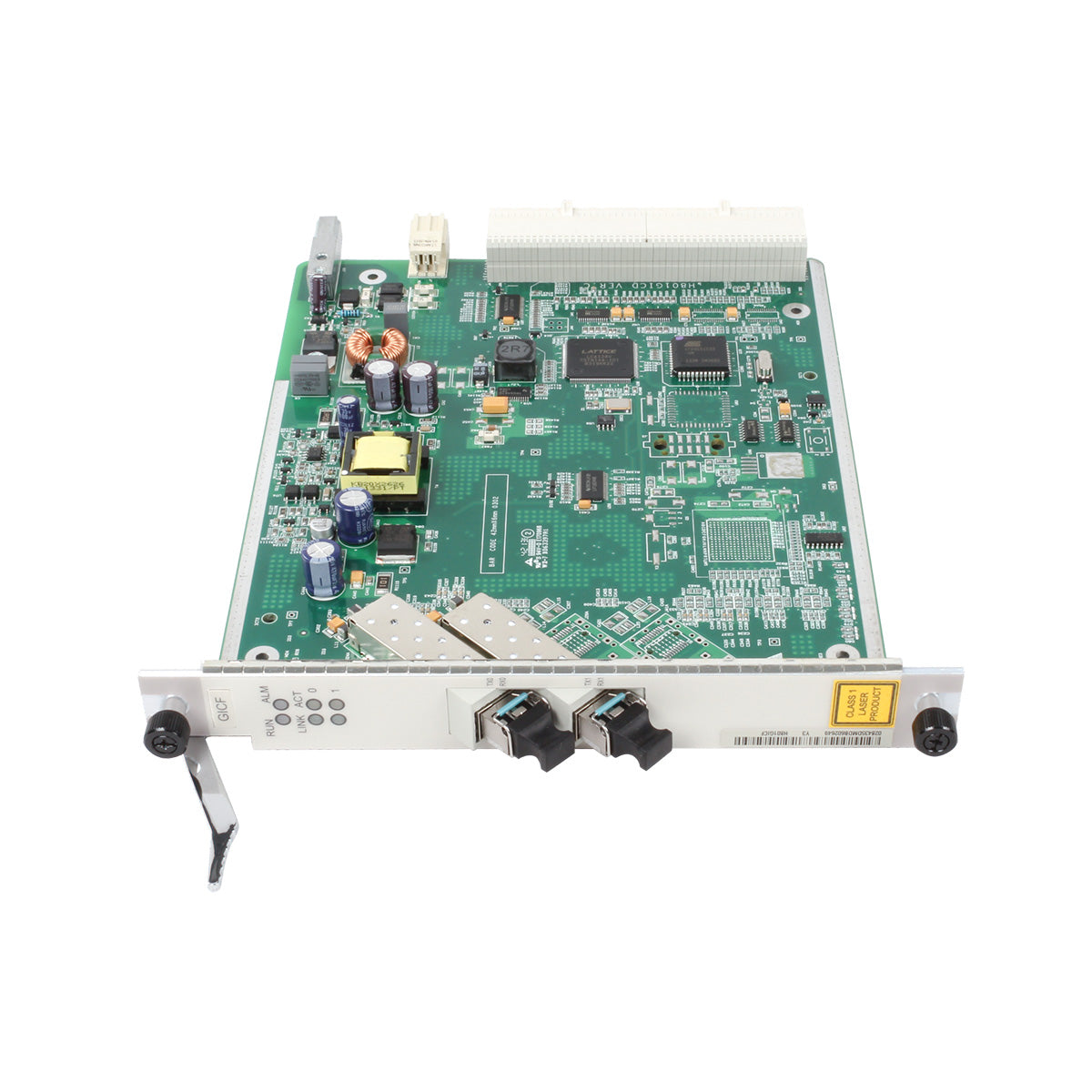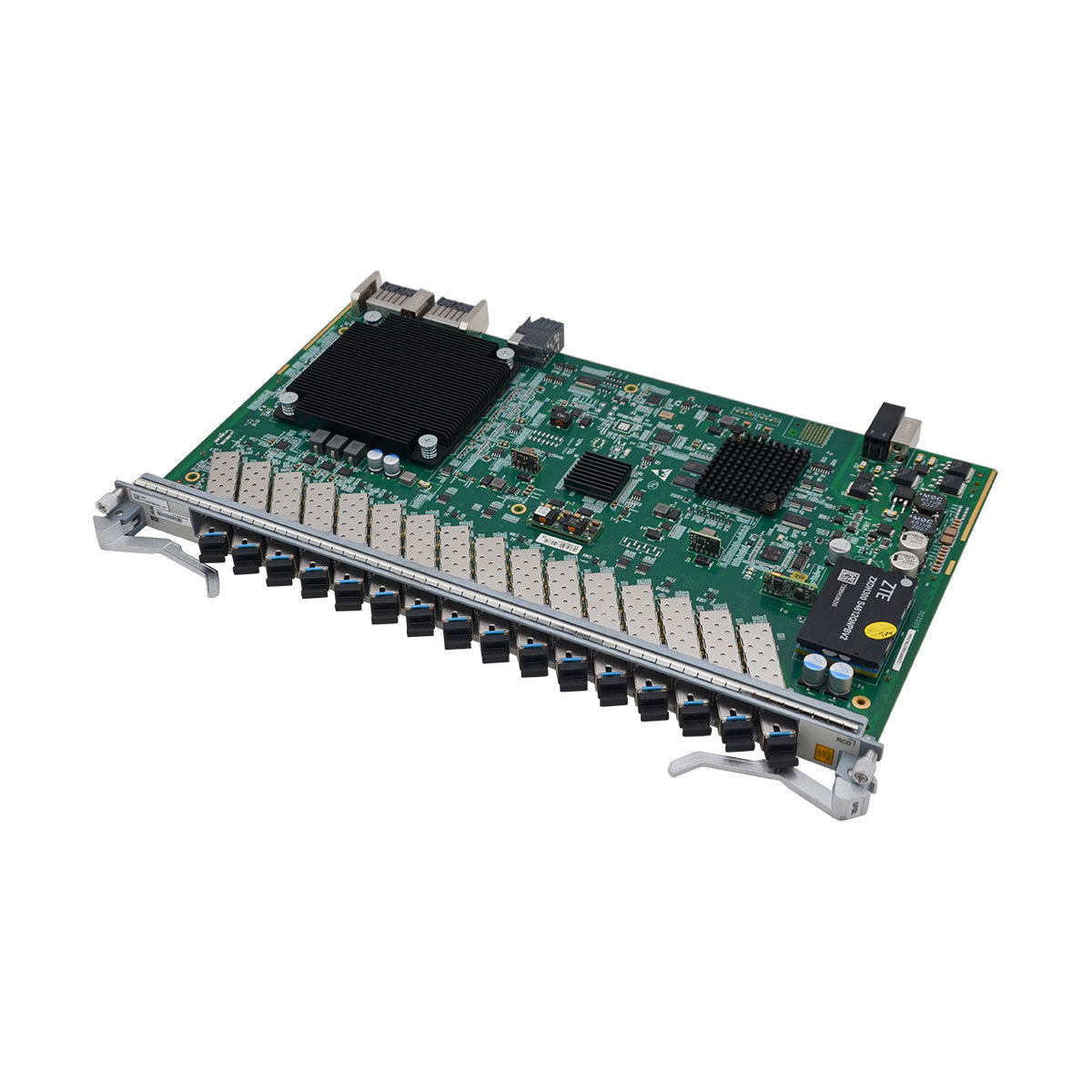Huawei S5720-28X-SI-24S-AC switch with 24-port GE SFP, including 8-port 1000BASE-T combo, 4-port 10GE SFP+, 1 AC power
Forwarding performance: 96Mpps
Switching capacity: 336Gbps
By default, a combo port works in auto mode, in which the port type is determined as follows: You can configure a combo port as an electrical or optical port using the combo-port command.
- If the optical port has no optical module installed and the electrical port has no Ethernet cable connected, the port type depends on which port is connected first. If the electrical port is connected by an Ethernet cable first, the electrical port is used for data switching. If the optical port has an optical module installed first, the optical port is used for data switching.
- If the electrical port has an Ethernet cable connected and is in Up state, the electrical port is still used for data switching when the optical port has an optical module installed.
- If the optical port, no matter in Up or Down state, has an optical module installed, the optical port is still used for data switching when the electrical port has an Ethernet cable connected.
- If the optical port has an optical module installed and the electrical port has an Ethernet cable connected, the optical port is used for data switching after the switch restarts.
Huawei S5720-SI Flexible Gigabit Ethernet switches that provide resilient, high-density Layer 3 switching for data centers. Features include multiple-terminals, HD video security, and video conferencing applications. Intelligent iStack clustering, 10 Gbit/s upstream ports and IPv6 forwarding enable use as aggregation switches in enterprise campus networks.
Next-generation reliability, security, and energy-saving technologies make S5720-SI Series Switches easy to install and maintain, and an excellent source of low Total Cost of Ownership (TCO).
| Item | Description |
| Fixed port | 24 Gig SFP, 8 combo 10/100/1000Base-T Ethernet ports, 4 10 Gig SFP+ |
| Forwarding performance | 96 Mpps |
| Extended slot | NA |
| MAC address table | IEEE 802.1d |
| 16K MAC address entries | |
| MAC address learning and aging | |
| Static, dynamic, and blackhole MAC address entries | |
| Packet filtering based on source MAC addresses | |
| VLAN | 4K VLANs |
| Guest VLAN and voice VLAN | |
| GVRP | |
| MUX VLAN | |
| VLAN assignment based on MAC addresses, protocols, IP subnets, policies, and ports | |
| 1:1 and N:1 VLAN Mapping | |
| IP routing | Static routes, RIPv1/2、RIPng、OSPF、OSPFv3、ECMP、ISIS、ISISv6、BGP、BGP4+、VRRP、VRRP6 |
| IPv6 features | Neighbor Discovery (ND) |
| Path maximum transmission unit (PMTU) | |
| IPv6 Ping, IPv6 Tracert, and IPv6 Telnet | |
| 6 to4 tunnel, ISATAP tunnel, and manually configur ed tunnel | |
| Multicast forwarding | IGMP v1/v2/v3 snooping and IGMP fast leave |
| Multicast forwarding in a VLAN and multicast replication between VLANs | |
| Multicast load balancing among member ports of a trunk | |
| Controllable multicast | |
| Port-based multicast traffic statistics collection | |
| MLD v1/v2、MLD v1/v2 Snooping | |
| Multicast Dense Mode (PIM-DM), and Protocol Independent Multicast Source-Specific Multicast (PIM-SSM) | |
| Multicast Source Discovery Protocol (MSDP) | |
| QoS/ACL | Traffic classification based on ACLs |
| Configuring traffic classification priorities | |
| Traffic shaping on an egress interface | |
| Traffic filtering, Traffic policing (CAR), Modifying the packet priorities, Modifying the simple domains of packets, Modifying the packet VLANs | |
| Priority Queuing (PQ), Weighted Deficit Round Robin (WDRR), PQ+WDRR, Weighted Round Robin (WRR), PQ+WRR | |
| Basic IPv4 ACL, Advanced IPv4 ACL, Basic IPv6 ACL, Advanced IPv6 ACL, Layer 2 ACL, User-defined ACL | |
| Number of rules per IPv4 ACL: 2K | |
| Number of rules per IPv6 ACL: 2K | |
| Security features | Hierarchical user management and password protection |
| DoS attack defense, ARP attack defense, and ICMP attack defense | |
| Binding of the IP address, MAC address, interface number, and VLAN ID of a user | |
| Port isolation, port security, and sticky MAC | |
| MAC Forced Forwarding (MFF) | |
| Blackhole MAC address entries | |
| Limit on the number of learned MAC addresses | |
| IEEE 802.1x authentication and the limit on the number of users on an interface | |
| AAA authentication, RADIUS authentication, HWTACACS+ authentication, and NAC SSH v2.0 | |
| Hypertext Transfer Protocol Secure (HTTPS) | |
| CPU defense; Blacklist and whitelist | |
| Reliability | Service interface-based stacking |
| Maximum number of stacked devices: 9 | |
| Stack bandwidth (Unidirectional): Up to 48 Gbit/s | |
| VRRP standard protocol | |
| Management and Maintenance |
Virtual cable test, SNMP v1/v2c/v3, RMON |
| Network management system (NMS) and Web managemen | |
| System logs and multi-level alarms | |
| 802.3az EEE | |
| sFlow | |
| iStack | |
| Interoperability | VLAN-Based Spanning Tree (VBST), working with PVST, PVST+, and RPVST |
| Link-type Negotiation Protocol (LNP), similar with DTP | |
| VLAN Central Management Protocol (VCMP), similar with VTP | |
| Operating environment | Operating temperature: 0-1800 m altitude: 0-45℃
1800-5000m altitude: The operating temperature reduces by 1oC every time the altitude increases by 220m. Relative humidity: 5% to 95% (noncondensing) |
| Input voltage | AC: Rated voltage range: 100 V to 240 V AC, 50/60 Hz
Maximum voltage range: 90 V to 264 V AC, 47/63 Hz DC: Rated voltage range: –48 V to –60 V, DC Maximum voltage range: –36 V to –72 V, DC |
| Maximum input current | 3 A |
| Maximum power consumption of the device | AC: 41.7 W
DC: 42.7W |
| Dimensions (H x D x W mm) | 43.6 x 442.0 x 224.8 |
| PN. | 98010625 |
